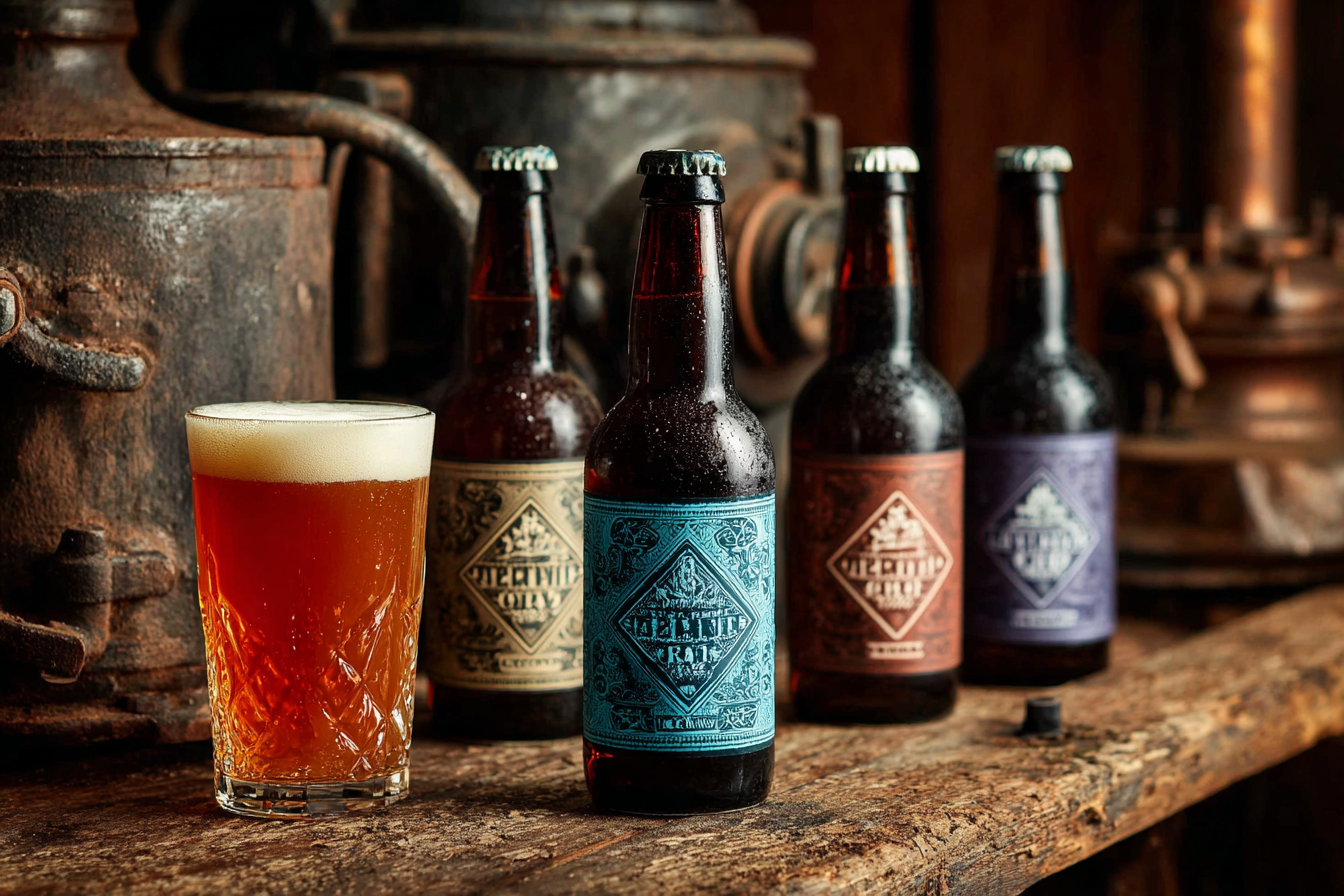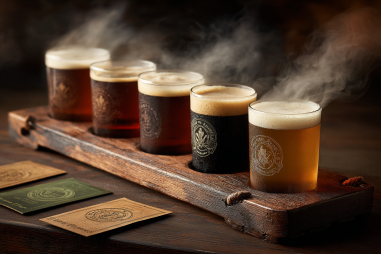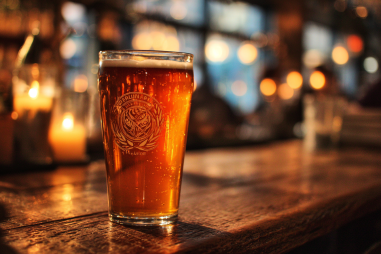American Pale Ale, often abbreviated as APA, is one of the most recognizable and beloved beer styles in the craft beer community today. Its crisp, hop-forward, and balanced profile has made it a go-to choice for both casual drinkers and beer aficionados. But how did this style come to be? To understand the history of American Pale Ale is to explore a fascinating journey of brewing ingenuity, cultural shifts, and regional influences that have shaped the American craft beer landscape as we know it. Let’s dive into the story behind this iconic beer style and trace its path from humble beginnings to modern craft favorite.
Origins of Pale Ale and Its Arrival in America
The roots of American Pale Ale can be traced back across the Atlantic to English Pale Ale. This style emerged in England in the 18th century, characterized by its pale malt base, moderate bitterness, and a clarity that stood apart from darker beers like porters and stouts. English brewers used local malt and earthy English hops such as Fuggle and East Kent Goldings, producing a beer with a balanced maltiness and subtle hop aroma.
As British settlers made their way to America, they brought their brewing traditions with them. However, the New World’s unique ingredients and brewing environment meant American brewers began to experiment and modify the style. Early American ales were influenced heavily by the availability of different grains and hops, especially native hop varieties that would later form the backbone of America’s distinct brewing identity.
Early American Pale Ale Styles and Brewing Techniques
In colonial America, brewing was mostly a local endeavor, with small batches made in home breweries or taverns. The beers of the 18th and 19th centuries were quite different from what we know as APA today — often lower in alcohol and featured more malt-forward profiles.
During the 19th century, American brewing leaned heavily towards lagers introduced by German immigrants, but some ales persisted. Early American Pale Ales, as we understand them in a contemporary sense, didn’t truly emerge until the mid-20th century. Brewers began incorporating American-grown hops with their distinct, often more assertive, citrus and pine characteristics, changing the flavor profile significantly compared to their English predecessors.
This period also saw advances in brewing technology, including improved malt kilning that allowed for paler malts and better quality control. These advancements helped establish a foundation for what would become the American Pale Ale style.
Influence of West Coast Breweries and Hop-Forward Brewing
The modern American Pale Ale owes much of its character to West Coast breweries, particularly those based in California during the 1970s and 1980s. This region became a hotbed for craft beer innovation, where pioneering breweries pushed the boundaries of traditional brewing styles.
The hallmark of West Coast APA is its hop-forward profile, featuring robust use of American hop varieties such as Cascade, Centennial, and Chinook. These hops bring out a signature grapefruit, pine, and floral character that distinguishes APA from its English roots. This emphasis on hops was a bold departure from the mostly malt-centric beers dominating American markets during the mid-1900s.
Moreover, these breweries popularized the idea of using pale malts that amplified hop aromas and flavors while maintaining a crisp, clean finish — a combination that resonated with beer drinkers seeking something different and exciting.
Role of Seminal Brewers and Craft Beer Pioneers
Several key figures and breweries played crucial roles in creating and popularizing American Pale Ale. One of the most iconic is Jack McAuliffe of New Albion Brewing Company, often credited with launching the modern American craft beer movement in the mid-1970s. Though New Albion was short-lived, it inspired a generation of brewers focused on quality, flavor, and innovation.
Other pioneers include Ken Grossman of Sierra Nevada Brewing Company, whose Sierra Nevada Pale Ale, introduced in 1980, became a blueprint for the APA style. It showcased prominent Cascade hops balanced by a biscuity malt backbone, earning widespread acclaim and influencing countless brewers nationwide. Similarly, breweries like Anchor Brewing and Deschutes contributed to defining and refining the APA approach.
These early trailblazers established a model for what craft beer could be: flavorful, locally made, and distinct from the mass-produced lagers dominating the marketplace.
Evolution of APA Through the Decades
Throughout the 1980s and 1990s, the American Pale Ale style continued to evolve alongside the growing craft beer movement. Brewing techniques improved with better yeast strains, malt varieties, and a broader array of hop cultivars becoming available. The style increasingly took on more assertive hop characteristics, often pushing the boundaries of bitterness and aroma intensity.
In the 2000s and beyond, the APA has remained a flexible style, expanding to include variations that incorporate new hop types and brewing methods. While classic West Coast APAs emphasized pine and citrus notes, newer versions might feature tropical fruit hop flavors, session-strength alcohol levels, or creative adjuncts like fruit and spices.
This ongoing evolution reflects both consumer demand for diversity and brewers’ willingness to experiment, ensuring the style remains fresh and exciting.
APA’s Impact on the Craft Beer Industry
The rise of American Pale Ale had a profound effect on the broader craft beer industry. By demonstrating that brewed-in-America ales could be vibrant, flavorful, and commercially viable, APAs helped spark a nationwide passion for craft beer. The style’s popularity paved the way for a wider acceptance of hoppy beers and encouraged brewers to push their creative limits.
APAs also played a significant role in educating consumers about beer ingredients, particularly hops, and fostered an appreciation for beer complexity beyond pale lagers. Many breweries use APA as a flagship beer, introducing new drinkers to craft beer through its balanced yet engaging flavor profile.
Furthermore, the success of APA helped establish infrastructure for sourcing quality ingredients, developing specialized brewing equipment, and building a community deeply rooted in innovation and appreciation for authentic flavors.
Current Trends and Innovations in APA
The American Pale Ale continues to inspire innovation within the craft beer scene, blending tradition with modern creativity. Some of the current trends include:
- New hop varieties: Breeders are constantly developing new hops with unique flavor profiles like tropical fruits, herbs, and berries, which are increasingly featured in APA variants.
- Session APAs: Lower-alcohol versions that maintain big flavor while appealing to drinkers seeking moderation.
- Experimental adjuncts: Some brewers introduce ingredients like citrus peels, spices, or exotic malts to add complexity and uniqueness.
- Hybrid styles: APAs crossed with IPAs, pale lagers, or even barrel-aging techniques to push boundaries.
These innovations ensure the APA style remains relevant and attractive to a broad spectrum of beer drinkers, from novice enthusiasts to seasoned connoisseurs.
American Pale Ale’s Enduring Legacy in the Beer World
American Pale Ale stands as more than just a beer style; it is a symbol of craft beer’s revolutionary spirit and the American brewing identity. From its English origins to its West Coast reimagining and beyond, APA represents the balance between tradition and innovation that defines craft brewing.
Its approachable yet flavorful profile helped bring craft beer into the mainstream and continues to influence brewers globally. Whether enjoyed at a local brewery, a craft beer festival, or a backyard barbecue, American Pale Ale is a testament to how creativity, quality ingredients, and passion can transform a simple beverage into an enduring cultural phenomenon.







